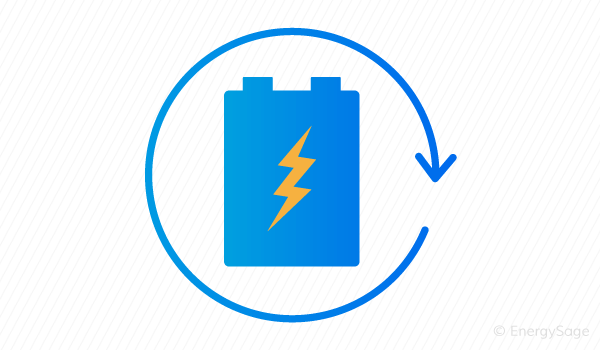Long-duration energy storage would set up renewables as great alternatives to grid electricity considering wind and solar power are next in line for power plant additions. If successfully executed, renewable energy would gradually overtake carbon-based energy sources, setting the stage for a greener future. It would be the perfect way to fulfill the world’s growing demand for energy without increasing greenhouse emissions.
Unfortunately, up until this point, great players in the energy industry haven’t been able to tap into the potential of long-duration energy because there seems not to be a financially feasible way to execute it. The greatest hurdle to the actualization of this innovative idea is that renewables’ intermittency cannot be solved with the currently viable energy storage solution. Lithium-ion batteries which are the only qualified candidate for this task can only store energy for a few days at best. And an attempt to expand their storage duration would be too expensive for even the most financially capable energy company.
That said, there’s a catalog of the most promising long-duration storage technologies that can be advanced to make the transition to green energy attainable. These contending technologies technically work, but not really within an acceptable price point. Not to mention that the development cycle might go on for ages and bankrupt participating companies because the dream becomes a reality. No organization has come forward and declared that they’re willing to risk all their resources on a storage solution that isn’t guaranteed to be a success.
While the roadblocks that hinder the actualization of long-distance storage technologies are far from trivial, the existence of Enovatek energy storage and other small-scale renewable storage solutions is the glimmer of hope that keeps energy companies banking on this vision going. The argument is, if it can be done on a small-scale level, then a large scale is also executable with the right strategy. The actualization of long-distance storage technologies would especially benefit Asian countries considering their hot and humid weather gives them access to unlimited solar energy most of the year. Countries like Singapore and the Philippines have actually already set up wind and solar firms in anticipation of long-duration energy storage solutions.
Let’s explore prospective long-duration storage technologies that could make this dream come true.
Pumped Hydro
Pump hydropower is a potential long-duration energy storage system that’s centuries old. The principle behind it is leveraging gravity for power generation. It’s a genius innovation idea because it would use a natural force to ensure the globe had access to limitless energy that would fulfill the different energy demands across different seasons.
To execute this idea, an off-ground water reservoir would need to be built so that when the water descends, power is generated. But the fact that this hasn’t been executed after centuries of the idea being around proved that a lot still isn’t in order for the execution to be feasible. However, it’s still considered a viable contender for electricity generation across the globe.
If this were to be brought to life, interested energy companies would need to build advanced water reservoirs that don’t interrupt the flow of water bodies. This would allow the energy industry to inch closer to delivering reliable pumped hydro plants.
Underground Compressed Air
Like pumped hydropower, storing isn’t a new concept; in fact, but it has equally remained a possibility that hasn’t successfully pioneered a viable energy storage solution. But private energy companies keep figuring out new approaches that could jump-start the use of underground compressed air to store renewable energy over a long duration. Hopefully, with enough improvements to the initial concepts, years of research might finally bear fruit.
The principle behind underground compressed air is to utilize surplus electric energy to force air under pressure to fill up an underground tank. The responsible energy company would then use automation to control air release to facilitate regulated re-generation of electricity.
Big players in the energy industry have suggested using abandoned caves as storage areas for the pressurized air because they’ll be off-site, preventing any interference with the storage tanks. Caves would be perfect, especially because most of them are natural cavities that would eliminate the need to build storage tanks from scratch.
Liquid Air
Liquid air is yet another promising long-duration energy storage concept that was borrowed from the aviation industry. Interested energy companies stepped in to refine the technology so it can be ready for application in the energy industry. From here, the next step would be to design large-scale power plants to bring the vision to life.
The mechanism behind liquid air storage is using off-ground tanks as reservoirs for cool, pressurized air. The controlled release of the liquid air would then generate power. But before this is a reality, the companies have to show proof of concept so that partners and sponsors can jump on the idea.
Wrapping Up
Exploring promising long-duration energy storage technologies is a reminder that global adaptation of green energy is innovations away from being a reality. Looking at the positive gives us hope that it’s possible to de-accelerate the drastic consequences of climate change.
Follow Home Inside for more!
